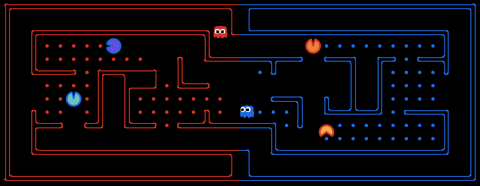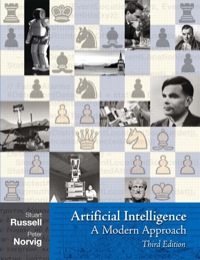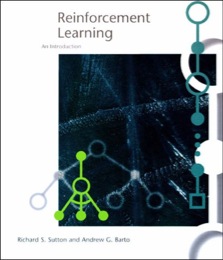Artificial Intelligence
E81 CSE 511A
When and Where
Tuesday, Thursday, 2:30PM-4:00PM in McDonnell Hall 162.The midterm is October 14th, during class.
The final will be December 17, 3:30PM - 5:30PM.
Who
David V. LuOffice: Jolley 403
Office Hours: Tuesday 4-5:30pm, Thursday 1-2:30pm, or by appointment.
TA: Chip Schaff
Email: FirstInitial LetterB LastName@wustl.edu
Office Hours: Monday 3pm-4:30pm, Location: Jolley 508
Important Note: Ask all your questions on Piazza rather than emailing the Professor/TA.
Description
The discipline of artificial intelligence (AI) is concerned with building systems that think and act like humans or rationally on some absolute scale. This course is an introduction to the field, with special emphasis on sound modern methods. The topics include knowledge representation, problem solving via search, game playing, logical and probabilistic reasoning, planning, statistical machine learning (in particular Bayesian statistics, graphical models, approximate inference) and machine vision. Programming exercises will concretize the key methods. The course targets graduate students and advanced undergraduates. Evaluation is based on written and programming assignments, a midterm exam, and a final exam.Prerequisites
- CSE 132, CSE 240, and CSE 241, or permission of the instructor.
- Knowledge of Python. If you are unsure about your python skills, here are some nice tutorials: Berkeley, O’Reilly, Python.org
- Some basic knowledge of statistics, probability theory and first order logic is recommended (a review lecture will be added if necessary)
Objective
The goal of this course is to give an introduction to the field of artificial intelligence with an emphasis to provide a solid foundation to transition to more advanced courses like computer vision (CSE 559), machine learning (CSE 517A), robotics (CSE 550A) or bio-informatics (CSE 587A).Topics
This course is organized in three chapters:- Deterministic AI including knowledge representation, search and planning with AI game players as an example application.
- Reinforcement Learning. Here we focus on Markov decision processes and learning from feedback.
- Statistical Inference with an emphasize on Bayesian statistics, graphical models (Bayes nets) and approximate inference methods.
Pacman
This course's projects will be implemented within an emulation of the classic game Pacman. At the end of the semester, there will be a Pacman Capture the Flag competition. The goal is to design an automated agent that eats the other player’s dots, while avoiding the ghosts of the opponent. The winner will obtain extra course credits, respect and infinite fame.


